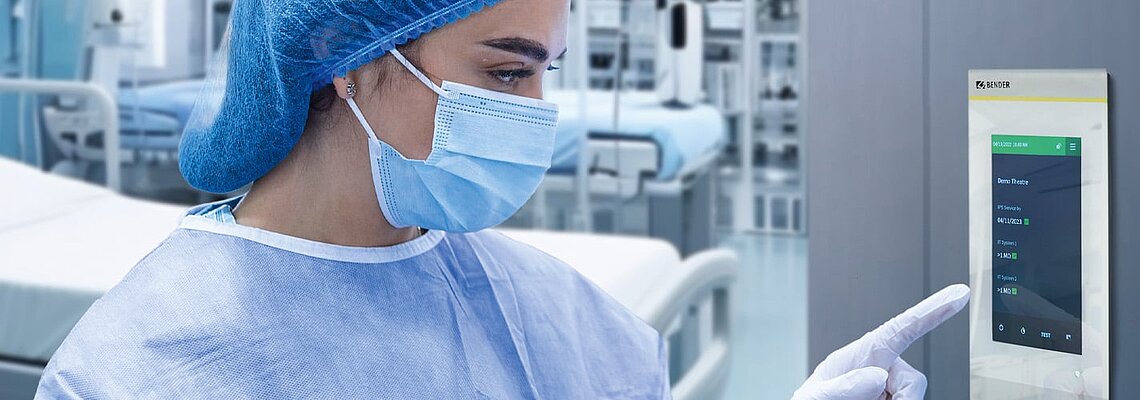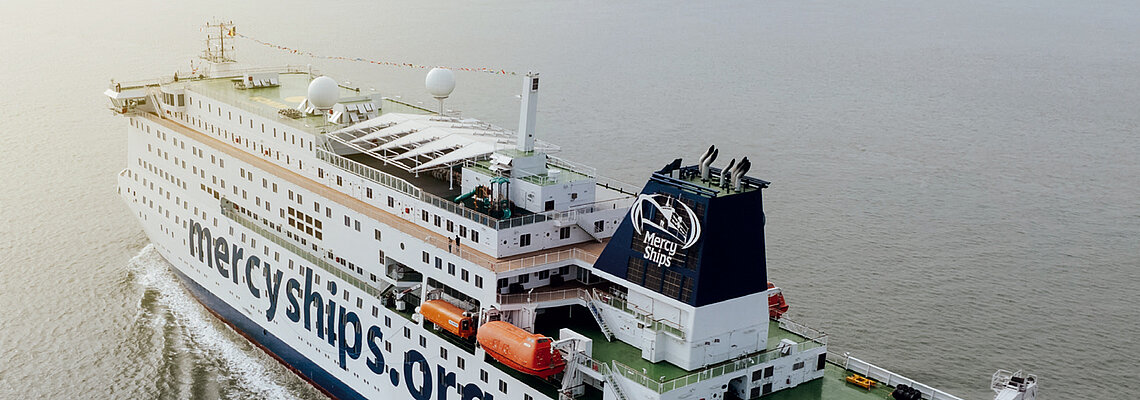
Retrofit on the high seas
Safety at sea: How Bender gave the Global Mercy™ crew the necessary insight
When lives are at stake, there can be no compromises when it comes to electrical safety. This is especially true for the Global Mercy™– the world's largest civilian hospital ship. A symbol of hope, equipped with state-of-the-art technology, newly delivered and ready for action. But soon after the ship had entered service, the crew was confronted with a sobering reality: frequent and sometimes recurring insulation faults on board.
To the Global Mercy™ project page
What sounds like a technical detail was an enormous burden for the electrical engineering team. In the middle of commissioning, under time pressure and with the goal of ensuring the constant availability of the on-board hospital, they had to deal with faults that a new ship should not actually have. The complex installation, wide variety of system components and difficult-to-trace malfunctions led to frustration, uncertainty – and constant concern that safety-critical systems could fail.
Action had to be taken. After all, on a ship designed to save lives, the early and accurate detection of insulation faults is crucial. Particularly in IT networks, earth faults often go unnoticed – and are therefore potentially life-threatening. The crew needed a solution that was not only technically sound but also did not jeopardise ongoing operations.
Retrofit as a solution
This is where Bender came in – with a rather unusual suggestion for a new ship. The team of experts, with years of experience in the hospital sector and maritime applications, presented the Global Mercy™ crew with a tailor-made retrofit concept that was precisely tailored to the specific requirements of a hospital ship. A solution that not only made the errors visible but also relieved the crew and sustainably enhanced safety on board.
Instead of a standard solution, Bender enabled:
- Real-time monitoring of the insulation values of the networks
- Immediate alarms when limit values are exceeded
- Precise fault location – even with symmetrical or fluctuating faults and short-term faults
- Integration of fixed and mobile components as well as remote access
The retrofit was carried out in phases and in parallel with ongoing operations. Critical areas such as the 230V AC system were equipped with fixed location systems, while mobile devices were used flexibly in other zones. This meant that even temporary faults occurring under load conditions could be reliably detected – without disrupting or interrupting operation.
Today, the electrical engineering team on board reports significantly reduced response times, meaning that faults can be located within an hour. At the same time, troubleshooting requires less manpower. Overall, this leads to greater operational reliability and more confidence in the infrastructure.
A particularly challenging case clearly demonstrated how effective the new Bender system is on board: A faulty extension cable for deck washing caused a recurring fault. However, due to moisture and long cable runs, it only occurred sporadically and under certain conditions, mainly when washing the deck. The combination of continuous monitoring, data analysis and the fault detection system enabled this fault to finally be discovered and rectified.
The result
The retrofit not only brought technical improvements, but also greater safety, efficiency and peace of mind for the electrical team. The effectiveness of the fault detection system is particularly evident in areas prone to moisture, such as outdoor decks, the gallery or air conditioning systems: The ability to analyse log data remotely enables effective planning and predictive maintenance.
Are you interested in electrical safety in hospitals, at sea or even somewhere else entirely? Our website will give you an impression of our diverse areas of work and application!


